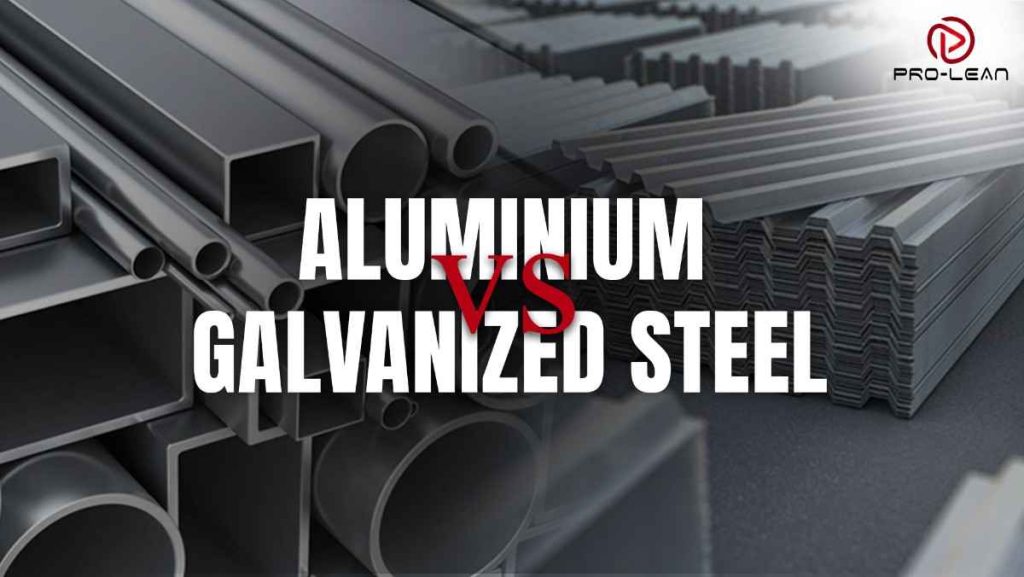
Aluminum vs. Galvanized Steel
Aluminum vs Galvanized Steel: Which material is right for your project?
Choosing the right material can make or break your project, so how do you decide between aluminum and galvanized steel?
These two metals are used widely in industries such as manufacturing, motor vehicles and manufacturing, but each comes with its strengths, limitations, and ideal applications.
From cost and corrosion resistance to strength and weight, the difference between aluminum and galvanized steel can significantly affect your project performance and budget.
At ProleanTech, our expert sheet metal fabrication services cover both materials, helping you choose and work with the right one for your specific needs.
This guide will break down the key factors to consider when comparing aluminum and galvanized steel — including durability, cost-efficiency, applications, and fabrication ease — so you can make the most informed decision for your next project.
Let’s explore the comparison in detail and find out which metal suits your project best.
What is Galvanized Steel?
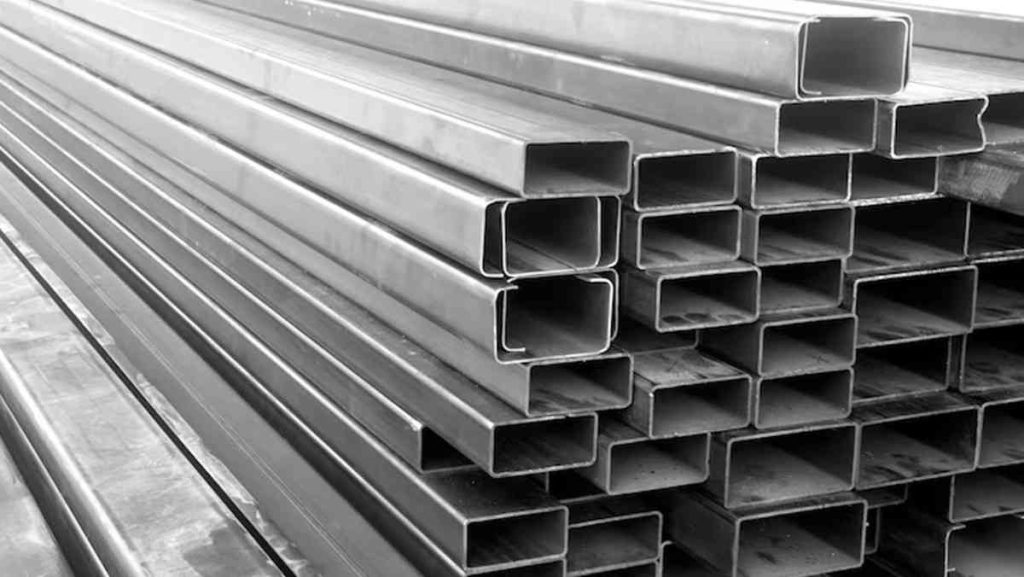
Stack of Galvanized Steel Rectangular Tubes
Galvanized steel is simply regular steel that is covered with a thin layer of zinc. This is done through a process where steel is dipped in hot and melted zinc, at a very high temperature of about 840 ° F. This high heat fuses zinc and steel very well, creating a strong bond.
Due to this layer of zinc, galvanized steel is very good at resisting rust. Zinc acts like a shield, stopping the water and the air from reaching the steel and causing rust. Also, if the surface is scratched, the zinc will rust before the steel does.
This process changes standard steel into a much stronger material that can deal with challenging external conditions. Because zinc protects steel for a long time, things made of galvanized steel last much longer, which is why it is often used for things that are out.
What is Aluminum?
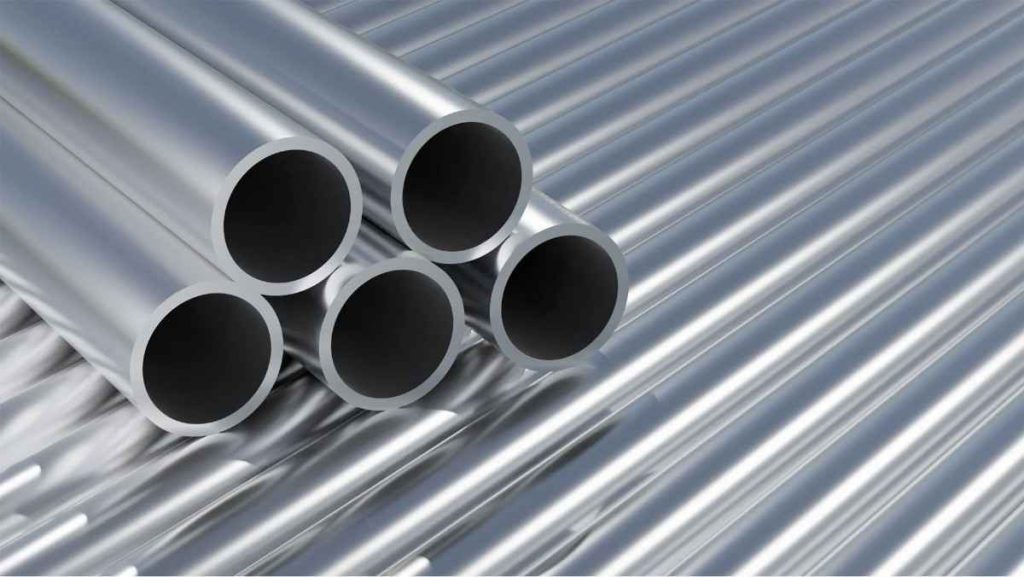
Stack of Shiny Aluminum Round Pipes
Aluminum is a prevalent non-ferrous metal used in many industries.
When aluminum is around oxygen, it naturally makes a layer that protects it. This light metal is good at not rusting, even without extra coatings. This is useful when we worry about aluminum steel corrosion.
Generally, pure aluminum is not used by itself. Instead, it is mixed with other metals to make it better for different uses. Aluminum is naturally good at carrying electricity and heat, and is strong by lthe ight.
There are different types of aluminum mixtures, such as the 1000 to 7000 series. These have other properties for items such as wires or planes.
Galvanized Steel Properties and Applications
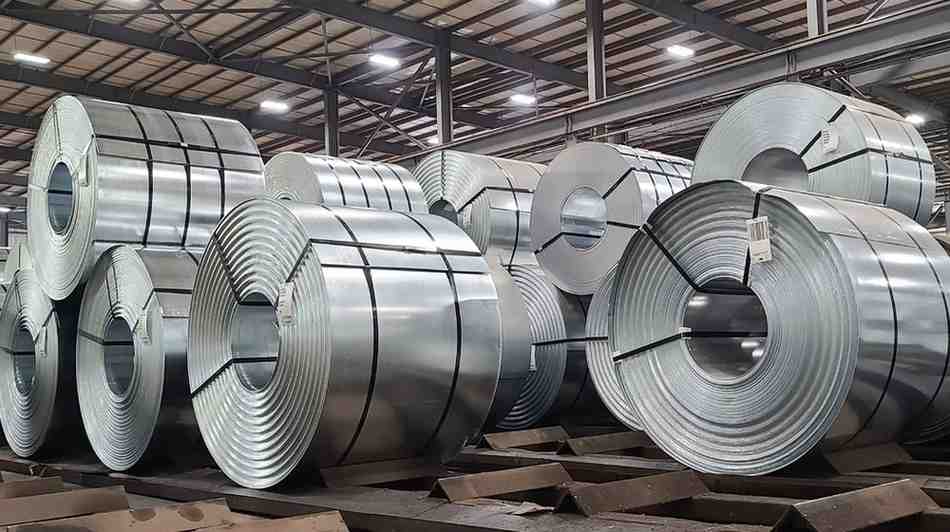
Large Coils of Galvanized Steel Sheets
The galvanization process makes several layers that act like a shield, making steel much stronger against damage compared to the not untreated steel.
Here are some galvanized properties and applications:
| Properties | Applications |
| Multiple protective layers act as a strong shield | Used in construction for frameworks, roofs, safety barriers on highways, and poles |
| Keeps steel firm | Used in industries like storage containers, agricultural tools, air conditioning ducts, and car parts |
| Prevents rust for many years in normal climates | Suitable for environments where long-term corrosion resistance is needed |
| Protects steel even if the surface is scratched | Ideal for complex jobs involving wear and friction, where surface damage might occur |
Aluminum Properties and Applications
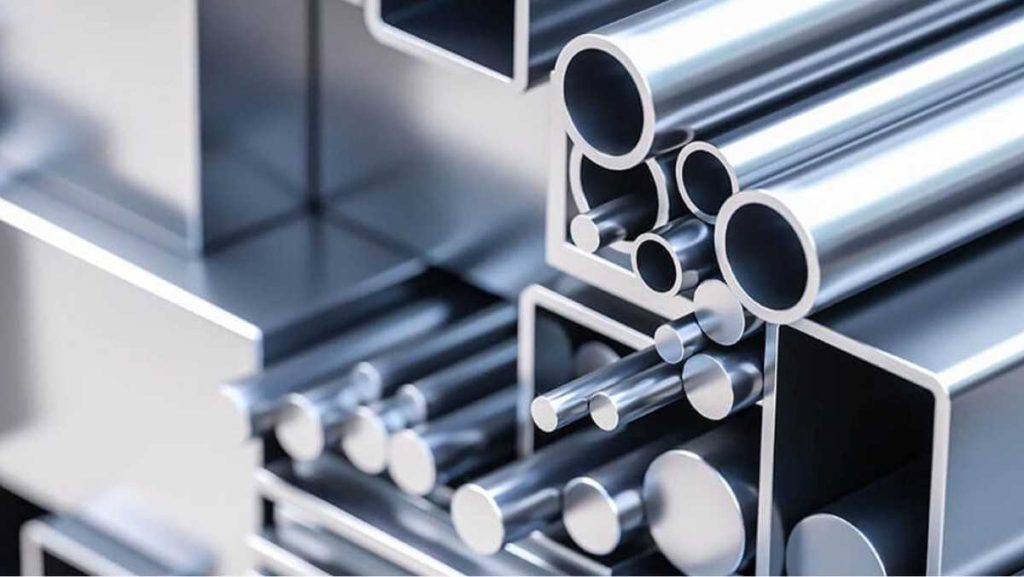
Assorted Aluminum Tubes
Aluminum is naturally rust-resistant and is very light. These properties make it great for many uses. Here are some aluminum properties and applications:
| Properties | Applications |
| Lightweight | Used in planes, cars, and boat building, where low weight is crucial |
| Natural corrosion resistance | Ideal for external walls, frames, decoration, and signs in buildings |
| Excellent strength/weight ratio | Suitable for structural uses needing strength without heavy weight |
| Good electrical conductivity | Used in power lines and electrical device parts |
ProleanTech specializes in aluminum fabrication, offering custom sheet metal fabrication services that leverage aluminum’s unique properties for diverse applications.
Try Prolean Now!
Comparison of Galvanized Steel and Aluminum: Key Properties and Differences
Choosing between galvanized steel and aluminum depends on various factors like strength, corrosion resistance, cost, and application needs. The table below summarizes the main differences to help guide your material selection based on performance, durability, and fabrication considerations.
| Aspect | Galvanized Steel | Aluminum |
| Strength & Weight | Stronger (36,000–80,000 psi), heavier, excellent resistance to stress | Varies (13,000–85,000 psi), lighter, better strength-to-weight ratio |
| Corrosion Resistance | Zinc coating protects steel, corrodes sacrificially | Natural oxide layer renews quickly, better near salty environments |
| Cost & Pricing |
Affordable ($0.70–$1.20/lb), heavier transport costs Note: Prices vary regionally and fluctuate over time. Always check current market rates. |
More expensive ($1.80–$2.50/lb), lighter, lower maintenance cost Note: Prices vary regionally and fluctuate over time. Always check current market rates. |
| Durability & Service Life | Long-lasting in normal conditions, coating thickness matters | Lasts longer in harsh/corrosive areas, can crack under stress |
| Environmental Impact | Recycling involves zinc recovery, less valuable scrap | Highly recyclable, uses 95% less energy to recycle, high scrap value |
| Thermal & Electrical | Poor heat conductor, magnetic properties | Excellent heat and electrical conductivity |
| Fabrication & Welding | Welding produces fumes, needs ventilation; coating may need repair | Requires special welding gases and careful heat control |
1. Strength and Weight Comparison
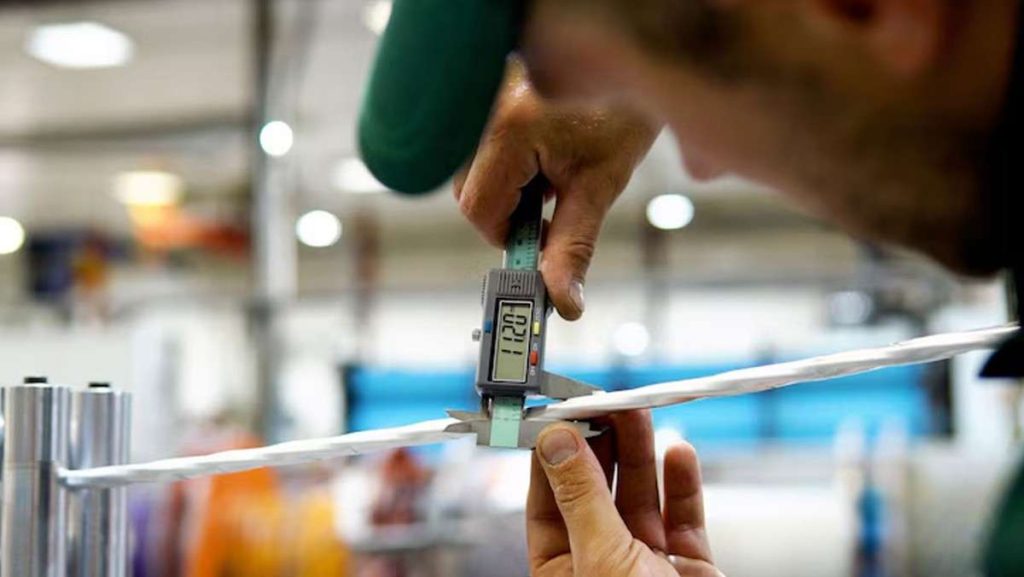
Strength and weight comparison
| Property | Galvanized Steel | Aluminum |
| Tensile Strength | 36,000 – 80,000 PSI | 13,000 – 85,000 PSI (varies by alloy) |
| Compression Resistance | Very strong; resists squeeze forces well | Moderate; depends on alloy |
| Stress Resistance | Excellent at withstanding repeated stress | Fair; can vary depending on type |
| Weight | Heavier | Much lighter |
| Strength-to-Weight Ratio | Lower | Higher (strong for its weight) |
| Best Use Case | High-strength, heavy-duty applications | Lightweight applications where weight matters |
| General Preference | When strength is the top priority | When reducing weight is more important |
The discussion around the strength of steel vs aluminum involves looking at different ways to measure how strong they are. Generally, galvanized steel is stronger than aluminum.
Its tensile force, which is the amount of force that it can bear before breaking, is usually between 36,000 and 80,000 psi. Steel is also very good at resisting squeeze forces and can deal with repeated stress without breaking easily.
On the other hand, the strength of aluminum when away ranges from 13,000 to 85,000 PSI, and this depends on the specific type of aluminum used.
Some strong aluminum types can almost match the strength of steel, but aluminum has a significant advantage in how light it is. This leads to aluminum having a better strength/weight relationship, which means it is strong for how much weight.
The difference between steel vs aluminum becomes vital in deciding which material to use for a job. If the design needs greater absolute resistance, steel is usually the best choice. However, if you keep weight is more important, even if it means that the general force can be slightly smaller, aluminum is usually preferred.
Therefore, even if aluminum is not always as strong as steel, its lightness makes it a good option for things where weight is a key factor.
2. Corrosion Resistance Analysis

Analysis of corrosion resistance of metals
| Aspect | Aluminum | Galvanized Steel |
| Corrosion Resistance Mechanism | Forms a natural oxide layer that protects it from corrosion | Coated with zinc, which corrodes first to protect the underlying steel |
| Reaction to Scratches | Oxide layer self-renews quickly after scratches | Zinc layer corrodes and may wear out over time |
| Performance in Humid Environments | May suffer galvanic corrosion if in contact with dissimilar metals | Same issue when touching other metals in moisture |
| Best Use Case | Ideal for coastal or salty air environments (high resistance to chlorides) | Better suited for general outdoor conditions without salt exposure |
| Galvanic Corrosion Risk | High when in contact with galvanized steel in moist conditions | Also susceptible when paired with aluminum in humid settings |
Both aluminum and galvanized steel resist corrosion well, but do it differently. Aluminum naturally creates a protective layer on its surface. Galvanized steel has a zinc coating that protects the steel underneath.
However, when aluminum steel corrosion becomes a concern is when these two different metals touch in a humid environment. This can cause a type of corrosion called galvanic corrosion.
Aluminum defense is underway; If your protective layer is scratched, it renews quickly, giving lasting protection. The galvanized steel zinc layer works to sacrifice. It corrodes first, which keeps steel safe.
For areas near the ocean, aluminum is usually better because it deals very well with salt and chloride in the air.
3. Cost-Effectiveness and Pricing
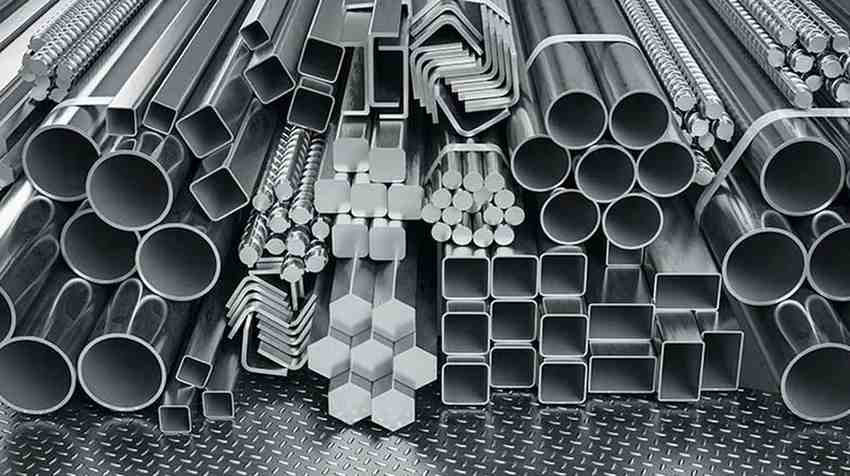
Assorted Metal Profiles and Bars
| Aspect | Galvanized Steel | Aluminum |
| Price per Pound (Approx.) | $0.70 – $1.20 | $1.80 – $2.50 |
| Weight | Heavier | Lightweight |
| Transportation Cost | Higher due to weight | Lower due to reduced weight |
| Maintenance Needs | May require more frequent maintenance | Generally low maintenance |
| Manufacturing Complexity | Easier to weld and fabricate | Needs special welding and equipment |
| Initial Material Cost | Lower | Higher |
| Long-Term Cost Efficiency | Depends on usage and maintenance needs | Can be more economical over product lifespan |
| Durability in Harsh Environments | May corrode over time without upkeep | Corrosion-resistant and long-lasting |
Comparing the aluminum vs steel price usually shows that aluminum costs higher, usually two to three times the price of galvanized steel per pound. For example, galvanized steel can cost between $0.70 and $1.20 per pound, while aluminum prices are in the range of $1.80 to $2.50 per pound.
However, just looking at the initial cost doesn’t tell the whole story. Aluminum is much lighter than steel, which can lead to savings in transportation. Also, throughout the product life, aluminum may not need as much maintenance as galvanized steel, potentially saving long-term money.
When considering the price of aluminum vs galvanized steel, you also need to think about how easy they are to work with. Aluminum needs special welding methods and specific equipment, which can affect manufacturing costs.
To really know which material is most economical, you must observe the long-term value. This includes how often you may need to replace the material, the costs of maintaining it in good condition, and how long the product should last.
4. Durability and Service Life
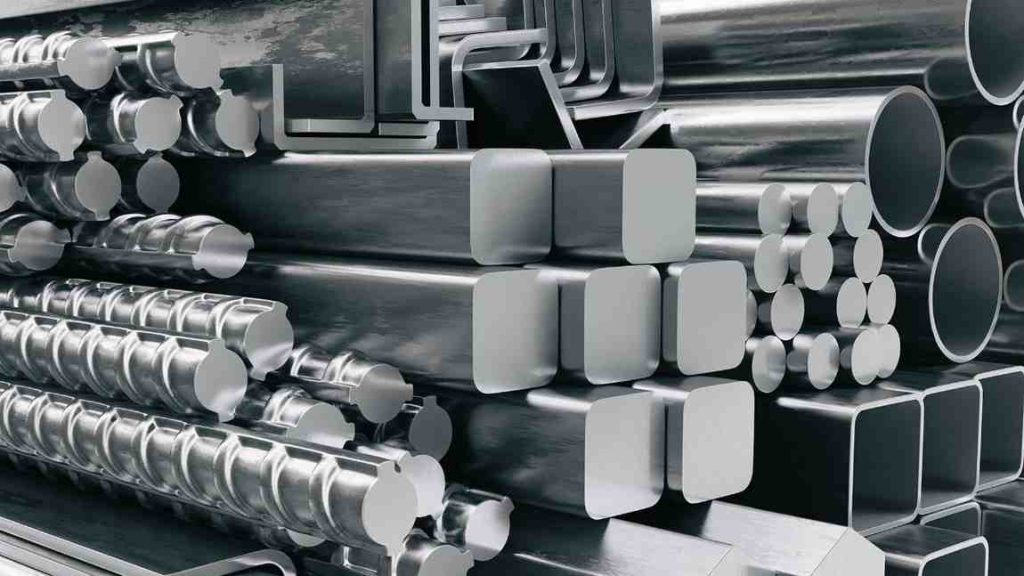
Stack of Various Metal Structural Materials
| Feature | Galvanized Steel | Aluminum |
| Corrosion Resistance | Good in normal environments | Excellent in harsh conditions (e.g., coastal) |
| Service Life | Long (depends on coating thickness) | Longer in corrosive environments |
| Weakness | May rust over time if coating wears | May crack under stress |
| Surface Dependency | Surface roughness affects coating durability | Surface texture affects coating grip |
| Fastener Compatibility | Needs correct fasteners to prevent corrosion | Needs compatible screws to avoid galvanic issues |
Comparing how long things last depends on the previous environment, where they are used, and what they need to do. If you choose the right one for the job, both galvanized steel and aluminum can be robust.
Galvanized steel can last for many years in normal conditions. How thick the coating is affects how long it will last. Aluminum often lasts longer in hard places, such as near the sea or in factories with chemicals, as it does not rust easily.
However, there are some disadvantages of aluminum. It can crack under stress in some places, and it cannot remain until it tilts and moves much further.
For both materials to stay as long as possible, it is important to design things well, make sure the surface roughness is correct, and use the right screws or other fasteners. The surface texture, or surface roughness, may affect how well the coatings stick and how easily they wear and tear.
5. Environmental Impact and Recyclability
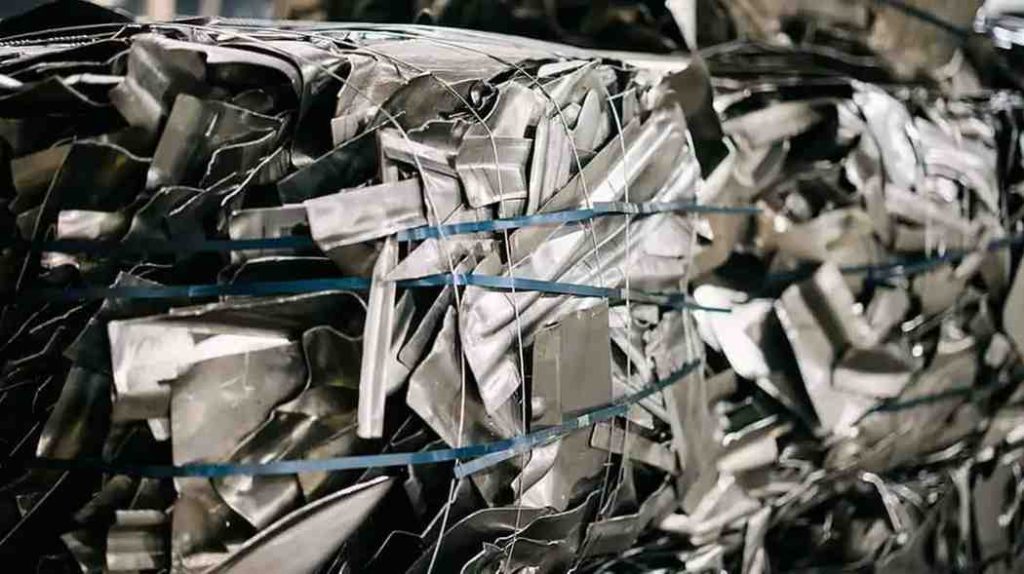
Metal Scrap for Recycling
| Factor | Aluminum | Galvanized Steel |
| Recyclability | Highly recyclable with minimal quality loss | Recyclable, but involves zinc separation |
| Energy Used in Recycling | Only 5% of original production energy | Moderate energy; zinc removal adds complexity |
| Scrap Value | High scrap value, economically attractive | Lower scrap value, less economic incentive |
| Environmental Impact (New Material) | High energy use in primary production | Lower energy for new steel production |
| Sustainability in Design | Favorable due to ease of recycling and durability | Considered but less prioritized |
Both aluminum and galvanized steel are great for recycling, but they affect the environment differently throughout their lifetime.
Recycling aluminum uses very low energy, only 5% of what was taken to make it originally. In addition, the quality of aluminum is almost correct, so that it can be recycled repeatedly in a very durable way.
Recycling galvanized steel involves using magnets to separate steel. Then, there is a special process to get the zinc back. However, the leftover scrap steel isn’t worth as much money as aluminum scrap, which can make recycling it less appealing economically.
Creating new, or primary, aluminum requires much more energy than making new steel. But because aluminum is so easily recycled, initially it is less of a problem on many cycles of high energy use.
When people are permanently designing things, they are paying more and more attention to these environmental factors when they want to use the ingredients, given the recurrence of each.
6. Thermal and Electrical Properties
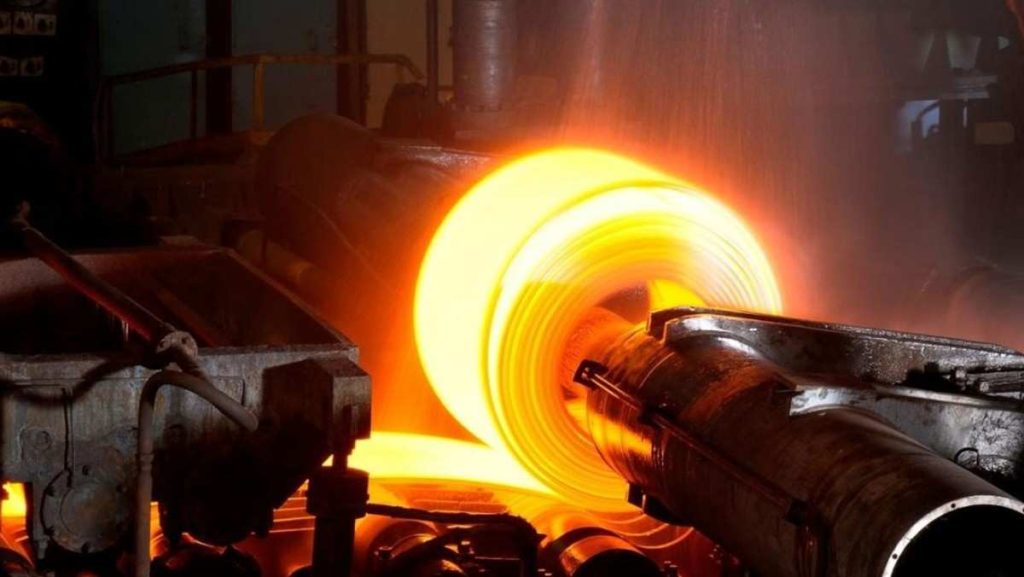
Hot Steel Coil
| Property | Aluminum | Galvanized Steel |
| Thermal Conductivity | High – transfers heat 4x better | Low – better for insulation |
| Electrical Conductivity | High – used in long-distance power lines | Lower – magnetic, used in certain parts |
| Thermal Expansion | Expands significantly with heat | Expands differently than aluminum |
| Suitability | Ideal for heat exchangers, electronics | Good for construction and insulation |
Different materials transfer heat at various speeds. For example, aluminum allows almost four times better heat to move forward than steel. Because of this, aluminum is a good option for things that need to move heat well, such as keeping heat exchanges and electronics cool.
On the other hand, galvanized steel, which does not conduct heat, is better for things such as insulation and construction structures.
Like with heat, electricity also travels differently through the material. Aluminum is often used to carry power over long distances, even though steel can be magnetic, which is helpful for some electrical parts that use magnets.
When you keep two different materials together, you need to think about how much they grow or shrink when the temperature changes. If they change by different volumes (thermal expansion differences), it can cause stress where they join and break.
7. Fabrication and Welding Considerations
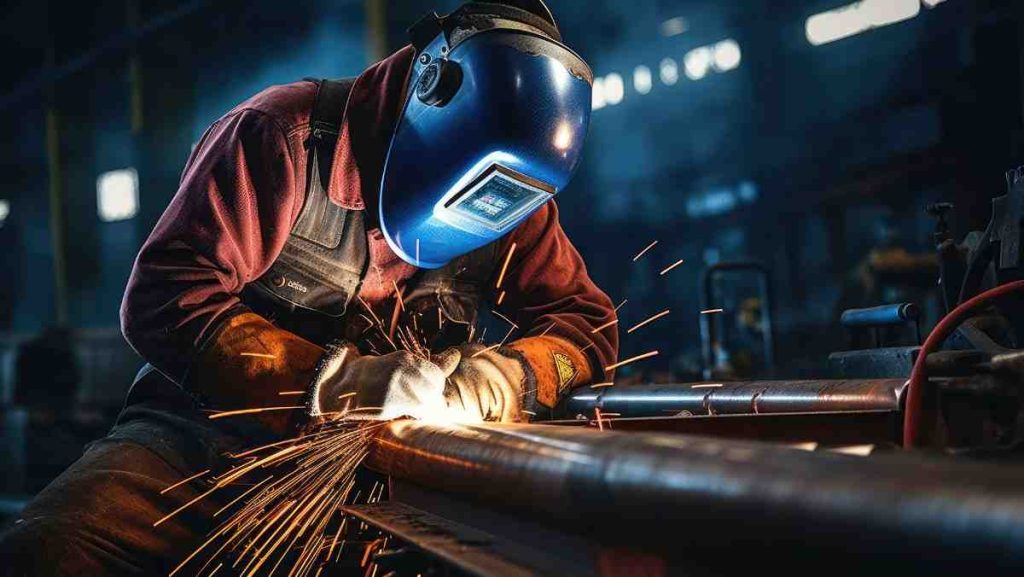
Fabrication & Welding
| Aspect | Aluminum | Galvanized Steel |
| Welding Protection | Requires special protective gases | Produces harmful smoke; needs good airflow |
| Welding Materials | Uses specific welding sticks | Standard welding rods used |
| Heat Sensitivity | Sensitive to heat; careful control needed to avoid distortion | Less sensitive but coating can be damaged by heat |
| Fume Safety | Fumes less toxic | Welding fumes toxic; ventilation essential |
| Coating Issues | No special coating concerns | Galvanized coating may rust or degrade; repair needed post-welding |
| Shaping/Forming | More difficult to shape; needs careful handling | Easier to form using standard methods |
| Fabrication Equipment | Requires specialized equipment and care | Uses common sheet metal fabrication tools |
The way we make things from metal sheets changes greatly depending on the type of metal we use. This really affects how we do sheet metal fabrication and what tools we need.
For example, when we weld aluminum, we have to use special gases to protect it, with some welding sticks. We need to be careful even with heat so that aluminum does not get out of size and maintains its strong properties.
Welding galvanized steel is different. It creates smoke that is bad for breathing, so we need good air flow. In addition, the rust that prevents the coating can be damaged, so we may need to fix it later.
However, when it comes to the basic methods of shaping metal sheets, called sheet metal basics, both aluminum and galvanized steel can be formed using these standard methods. But, because aluminum can be hard because we work with it, we need to handle it differently from how we shape steel.
At ProleanTech, our Sheet metal manufacturers must consider these processing differences when selecting appropriate fabrication methods and equipment.
Try Prolean Now!
Which is Better, Aluminum or Galvanized Steel?
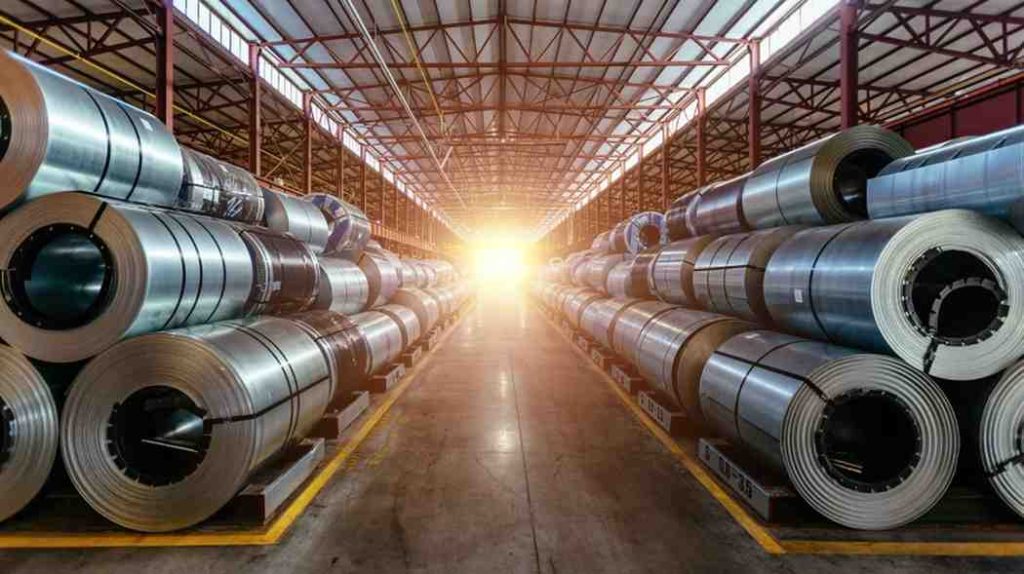
Rows of Industrial Metal Coils
Let’s talk about how strong things are made. It really depends on what you need to do. Any way to make something is not always best for everything.
For example, if you need some super-strong steel, do not want to spend too much money, and need to keep large items, then a type of steel called galvanized steel is great. It is also good if you need something to be magnetic or if it will really become warm.
But, if you want something that is light, then it will not rust easily, power can be taken well, looks good, or will be used near the sea, then aluminum is a better option.
Therefore, to take the best accessories to make something, you need to think about what that will be used for. This helps you to know whether galvanized steel or aluminum is the perfect pick.
Contact us now to discuss material selection with experienced professionals who can evaluate your specific application needs.
Comparison Table – Aluminium vs Galvanized Steel
To choose easy, here is a simple look that makes aluminum and galvanized steel different.
This comparison helps you see the important qualities of each, such as how strong they are and how they handle rust.
Knowing these characteristics makes it easy to decide between aluminum and galvanized steel for your needs.
| Property | Aluminum | Galvanized Steel |
| Weight | Lightweight (2.7 g/cm³) | Heavy (7.85 g/cm³) |
| Strength | 13,000-85,000 PSI | 36,000-80,000 PSI |
| Corrosion Resistance | Excellent (natural) | Very Good (coating) |
| Cost per pound | $1.80-$2.50 | $0.70-$1.20 |
| Thermal Conductivity | High | Low |
| Electrical Conductivity | Excellent | Poor |
| Magnetic Properties | Non-magnetic | Magnetic |
| Weldability | Requires a special technique | Standard welding |
| Recyclability | Nearly 100% | High with processing |
| Applications | Aerospace, Marine, Automotive | Construction, Industrial |
How to Prevent Galvanic Corrosion Between Aluminum and Galvanized Steel?
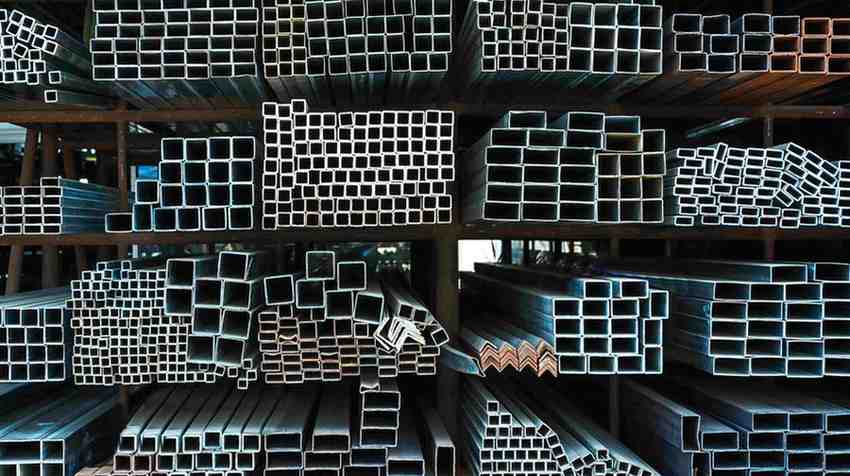
Shelves Stocked with Metal Profiles
To stop aluminum and steel from rusting when they touch, you need to keep them apart. You can use things like a non-conductive washer or a gasket to do physical separation.
For chemical safety, you can place it on special primers or paints. These make layers that block the rust. When you plan to keep things together, try to make the touch area small. Make sure the water can be easily overcome.
Also, use compatible fasteners. Thinking about content compatibility when you plan for the first time helps prevent the problems of bad rust. It keeps things firm and means that you will not have to fix them so much.
If you’re looking to explore the variety of metals, check out this guide on sheet metal types.
What is the Downside of Galvanized Steel?
Here are some downsides of galvanized steel that you must consider too:
- Significantly heavier than aluminum alternatives
- Zinc coating can be damaged during fabrication
- Requires touch-up after cutting or welding operations
- Limited protection in highly corrosive environments
- Characteristic spangled appearance may not suit all applications
- Welding releases toxic zinc fumes, requiring special ventilation
- Potential for white rust formation in certain conditions
- Higher transportation costs due to increased weight
What Happens When Galvanized Steel Touches Aluminum?
When the wetness is around, and the galvanized steel touches aluminum, they can react in a way called galvanic corrosion. This is because these metals act differently with electricity.
The zinc coating on steel becomes a giving part compared to aluminum, which makes the galvanized layer rust very fast. It can develop small holes called pits.
This entire response can quickly break the protective coating, weaken the structure, and mean that you need to fix things more often. When you have to use both materials, to prevent it from happening, you need to use things that create a barrier between them. This helps them to last long.
What is the Best Coating to Prevent Galvanic Corrosion?
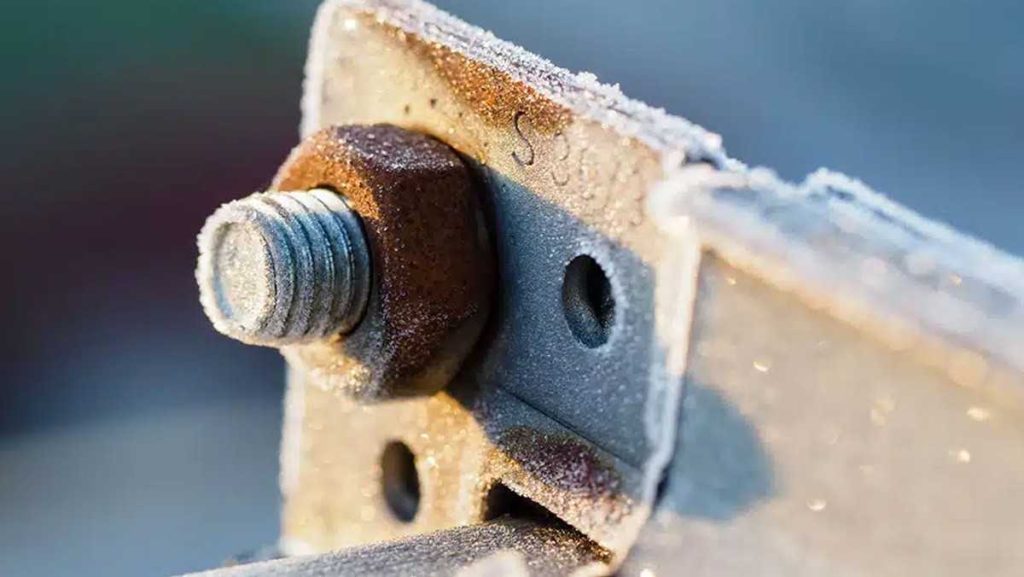
Frosty Corroded Nut and Bolt
To stop different metals from corroding each other, we can use good coverings. These include paint-like epoxy-based barrier coatings, paints with lots of zinc-rich primers in them, and special conversion coatings that stop electricity from flowing between the metals without making the materials weak.
How thick the covering needs to be and where the thing will be used help us pick the best covering. Also, getting the surface ready is super important so the covering sticks well and lasts a long time. These ways of protecting things need to work with both the materials being covered and where they will be used to keep them safe for a long time.
What is the Best Barrier Between Aluminum and Steel?
Non-conductive materials are the best to put between aluminum and steel. Things like neoprene gaskets, plastic washers, and rubber insulators are often used. These stop electricity from flowing between the metals. This helps keep the mechanical connection strong and stops the electrochemical reactions that cause rust, called galvanic corrosion.
Choosing the right barrier depends on what the connection will face, like how hot or cold it gets, how much pressure there is, and what chemicals it might touch. To use these barriers well, you need to think about whether the materials will work together, how to put them in place, and how they will last.
For very hot places, PTFE gaskets work great. EPDM rubber is good when things get weathered. And for typical uses, polyethylene is a cost-effective choice. How thick the barrier is, how much it can be squeezed, and if its surface matches the joint are all critical for a good seal and to stop electricity over time.
Conclusion
Choosing between aluminum and galvanized steel comes down to your project’s specific requirements. If you prioritize strength, durability, and cost-effectiveness in harsh environments, galvanized steel is a solid pick.
But if lightweight design, corrosion resistance, and conductivity are essential, aluminum is the better fit. Each material has distinct pros and cons, from fabrication ease to environmental impact and long-term value.
At ProleanTech, we help you navigate these choices with expert guidance and precision sheet metal fabrication services tailored to your needs. Whether it’s strength or flexibility you seek, we’ve got you covered.
Contact us today to discuss your project and discover the best material solution with ProleanTech’s expert support. Get your Custom Pricing Estimate today.

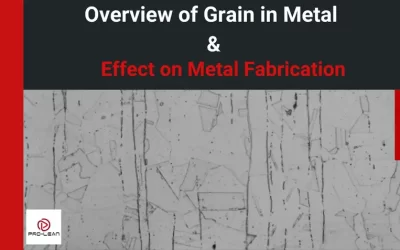
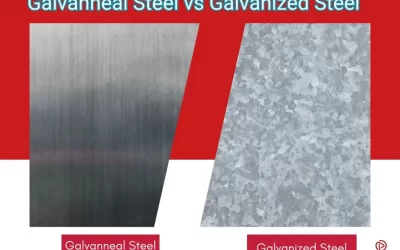
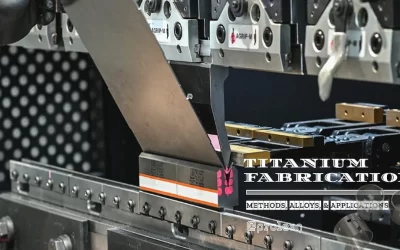
0 Comments